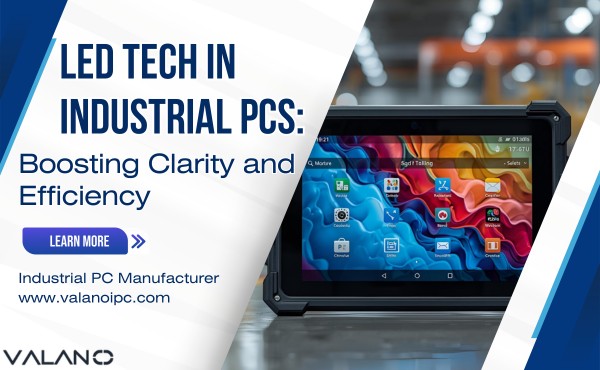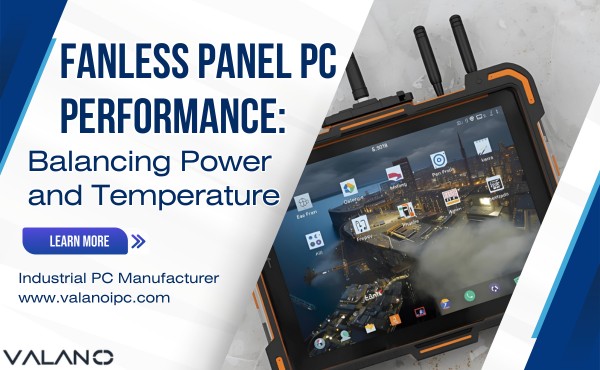
Choosing the best sunlight readable rugged tablet for outdoor use requires you to focus on features that ensure clear visibility and device longevity. High brightness, anti-glare technology, and adaptive brightness controls allow you to work comfortably under direct sunlight. Rugged tablets withstand drops and weather, while long battery life supports extended outdoor work.
Tablets with enhanced visibility and durable design have seen rising demand as users need reliable performance in bright, challenging environments.
Market Trend | Value/Detail |
|---|---|
Global sunlight readable displays market | |
Outdoor use, eye comfort, durability | |
Consumer Preference | Durable, anti-glare tablets |
You should always test a sunlight readable tablet in real outdoor conditions, as real-world performance matters more than just specifications.
Key Takeaways
Choose rugged tablets with high brightness displays above 800 nits to ensure clear visibility under direct sunlight.
Look for anti-glare coatings and semi-matte screens to reduce reflections and improve outdoor readability.
Select rugged tablets with strong water, dust, and shock resistance to handle tough outdoor conditions.
Use adaptive brightness controls to keep the screen readable as light changes and to save battery life.
Always test tablets in real outdoor settings to check screen visibility, durability, battery life, and connectivity.
Key Features to Look for in a Sunlight Readable Rugged Tablet for Outdoor Use
When you select a sunlight readable rugged tablet for outdoor work, you need to focus on features that guarantee clear visibility, reliable performance, and long-term durability. The following key features will help you make an informed decision.
High Brightness Displays
High brightness displays are essential for outdoor environments. You should look for tablets with display brightness levels above 700 nits. This benchmark ensures that the screen remains visible even under direct sunlight. Many consumer tablets only reach 400-600 nits, which is not enough for outdoor use. Valano Rugged tablets deliver brightness levels above 700 nits, making them suitable for fieldwork.
A sunlight-readable display with high brightness will help you avoid screen glare and maintain productivity in bright conditions. You should also consider the screen size and aspect ratio. Larger screens with a balanced aspect ratio provide better visibility and reduce eye strain during outdoor work.
Anti-Glare Technology
Anti-glare technology plays a critical role in reducing screen glare and reflections. Tablets with anti-glare coatings or semi-matte finishes improve clarity and make it easier for you to read the display in sunlight. This feature works together with high brightness displays to deliver a sunlight-readable display that performs well in challenging lighting conditions.
Note: Anti-glare coatings not only reduce reflections but also help maintain color accuracy and sharpness outdoors.
Adaptive Brightness Controls
Adaptive brightness controls automatically adjust the screen brightness based on ambient light conditions. This feature ensures that your tablet remains readable as lighting changes throughout the day. You do not need to manually adjust settings, which saves time and helps you focus on your tasks. Adaptive brightness controls also help conserve battery life by lowering brightness when full power is not needed.
You benefit from consistent visibility in both shaded and sunny areas.
Adaptive brightness controls support improved productivity by minimizing interruptions.
This feature is especially important for outdoor work, where lighting can change rapidly.
Rugged and Weatherproof Design
A rugged tablet must withstand drops, shocks, water, and dust. Look for devices with IP ratings, such as IP66-67, which means the tablet is fully dust-proof and can survive immersion in water up to 1 meter deep for 30 minutes. Rugged tablets often pass MIL-STD-810G or MIL-STD-810H military standard tests. These tests simulate vibrations, extreme temperatures, and impacts to ensure the tablet keeps working in harsh environments.
MIL-STD-810G vibration tests confirm that the tablet can handle bumpy rides and rough handling.
IP67 water resistance protects against rain, spills, and immersion.
Dust protection ensures reliable operation in deserts, construction sites, and other dusty locations.
High and low temperature tests verify that the rugged tablet works in both hot and cold climates.
A rugged tablet with reinforced casings and waterproof seals will give you peace of mind during outdoor work. You can rely on these devices to deliver consistent performance, even in extreme conditions.
Understanding Display Technologies for Optimal Sunlight Readability
Transflective vs. Transmissive Screens
You will find two main types of screens in outdoor tablets: transflective and transmissive. Transflective screens combine both transmissive and reflective elements. They use a special layer called a transflector. This layer reflects sunlight back through the display, which helps you see the screen clearly even in direct sunlight. You do not need a very bright backlight, so the device uses less power and stays cooler. Transmissive screens, on the other hand, rely on strong backlights—often 700 to 1000 nits or more—to make the screen visible outdoors. This approach increases power use and heat. Transflective screens excel in bright outdoor conditions because they reflect ambient light, while transmissive screens depend on high brightness and surface treatments to improve visibility.
Optical Bonding
Optical bonding is a process that attaches the touchscreen directly to the LCD panel with a clear resin. This technology reduces internal reflections and screen glare, making the display easier to read in sunlight. You will notice better contrast, richer colors, and wider viewing angles. Optical bonding also improves durability by absorbing shocks and protecting the screen from moisture and dust. Displays with optical bonding maintain a contrast ratio above 10 even in very bright environments, which means you get a sunlight-readable display that remains clear and vivid during outdoor work.
Optical bonding reduces glare and reflection.
It improves contrast and color saturation.
The process increases durability and extends the product’s lifespan.
Touchscreen Types
You should consider the type of touchscreen when choosing a tablet for outdoor use. Resistive touchscreens work with gloves or styluses, but they can feel less responsive. Capacitive touchscreens offer better sensitivity and support multi-touch gestures. However, they may not work well with gloves unless the device supports glove mode. Some rugged tablets use advanced capacitive screens that allow you to use them in rain or with gloves, which is helpful for fieldwork.
E-Ink Limitations
E-Ink displays perform well in direct sunlight because they reflect ambient light instead of emitting it. However, you will face some limitations. E-Ink screens have slow refresh rates, which makes them unsuitable for video or fast interactions. Color reproduction is limited because E-Ink uses a fixed number of pigments. Tests show that E-Ink displays can develop artifacts or slow down when exposed to bright sunlight for long periods. These factors limit their use for interactive tasks or applications that require vibrant colors.
Essential Practical Considerations When Selecting a Sunlight Readable Tablet for Outdoor Use
Battery Life
You need a rugged tablet that lasts through your entire shift. Outdoor work often means you cannot charge your device easily. Look for a rugged tablet with a battery life of at least 8 to 10 hours. Some models offer hot-swappable batteries, so you can replace them without turning off the device. This feature helps you stay productive all day. Long battery life supports improved productivity because you do not have to stop and recharge.
Heat and Performance
A rugged tablet must handle heat from the sun and heavy use. High temperatures can slow down performance or cause the device to shut down. Choose a rugged tablet with a wide operating temperature range. Many rugged tablets work well from -20°C to 60°C. Good heat management keeps your device running smoothly, even during long hours in direct sunlight. You should check for built-in cooling systems or heat-dissipating materials.
Portability
You want a rugged tablet that is easy to carry. Lightweight models help reduce fatigue during outdoor work. Look for a device with a comfortable grip and a size that fits your hand or bag. Some rugged tablets come with hand straps or shoulder straps. These features make it easier to use the tablet while moving. Portability ensures you can bring your device anywhere you need it.
Connectivity Options
Reliable connectivity is vital for outdoor work. You need stable connections to send data, access maps, or communicate with your team. Many rugged tablets support Wi-Fi, Bluetooth, and 4G LTE. For example, the Valano RT17 offers Bluetooth 5.1, Wi-Fi 6E, and optional 4G LTE. These options help you stay connected, even in crowded or remote areas. With these features, you can trust your rugged tablet to deliver reliable performance outdoors.
How to Effectively Test a Sunlight Readable Rugged Tablet in Real Outdoor Conditions
Evaluation Checklist
You need to test a sunlight readable rugged tablet in real outdoor settings before making a final decision. Use a checklist to make sure the device meets your needs. Here is a simple evaluation checklist you can follow:
Screen Visibility: Take the tablet outside at noon. Check if you can read the screen clearly in direct sunlight.
Touch Responsiveness: Try using the touchscreen with gloves or wet fingers. Make sure it responds well.
Battery Performance: Use the tablet for several hours outdoors. See if the battery lasts as long as the manufacturer claims.
Durability: Drop the tablet from waist height onto grass or a soft surface. Inspect for any damage.
Weather Resistance: Expose the tablet to light rain or dust. Confirm that it keeps working.
Connectivity: Test Wi-Fi, Bluetooth, and cellular connections in outdoor areas.
Comparing Specs and Real Use
You should not rely only on technical specifications. Specs like display brightness or IP ratings look good on paper, but real-world performance can differ. For example, a tablet with high brightness may still have screen glare if it lacks anti-glare coatings. A rugged tablet may pass lab tests but feel heavy or awkward during outdoor work.
Spec Sheet Claim | Real-World Test | Result Example |
|---|---|---|
700-1000 nits brightness | Screen in direct sunlight at noon | Readable, but some glare |
IP67 water resistance | Tablet in light rain | No issues, screen responsive |
10-hour battery life | Outdoor use with GPS and Wi-Fi | Lasted 8 hours |
You gain the best results by combining spec sheet information with hands-on outdoor testing. This approach helps you choose a sunlight readable tablet that delivers enhanced visibility and improved productivity in real outdoor work.
When you choose a sunlight readable tablet, focus on features that support outdoor work. Prioritize enhanced visibility, durability, and long battery life. Test each device in real outdoor conditions before you buy. Use the checklist to compare options and find the best fit. This approach helps you avoid screen glare and supports improved productivity in any environment.
FAQ
What makes a sunlight readable tablet different from a regular tablet?
You get enhanced visibility with a sunlight readable tablet. High brightness displays and anti-glare technology help you see the screen clearly during outdoor work. These tablets often include rugged features for durability.
How do adaptive brightness controls help during outdoor work?
Adaptive brightness controls adjust display brightness based on your environment. You do not need to change settings manually. This feature helps you avoid screen glare and supports improved productivity in changing light conditions.
Why should you choose rugged tablets for outdoor work?
Rugged tablets withstand drops, dust, and water. You can use them in harsh environments without worry. Their reinforced design and anti-glare coatings protect the sunlight-readable display and keep your device working during outdoor work.
Can high brightness displays drain the battery faster?
Yes, high brightness displays use more power. You should look for a rugged tablet with a large battery or hot-swappable options. This helps you maintain improved productivity during long outdoor work sessions.







